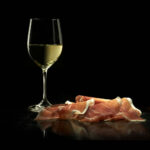
Like all things, everyone must start somewhere when it comes to wine. Most of us cut our teeth on the classic big and fruity California Chardonnay. This green-skinned grape can be found in every wine-growing region, partly due to its easy production and partly because of its ability to express terroir. And though most drinkers immediately associate Chardonnay with butter bombs good for getting drunk on, it doesn’t have to be that way. Chardonnay is, after all, one of the grapes for wine’s most sophisticated bottle: Champagne.
Of course, France is where Chardonnay comes from. The vine was born in Burgundy, where it’s still widely grown and is *the grape* in White Burgundy wines. The cooler climate leads to higher acidity bringing out Chardonnay’s tartness and citrusy qualities (think lemons and apples). But Burgundy is also where producers formulated the idea of placing Chardonnay in oak. The practice is common in the Pouilly-Fuissé, Côte Chalonnaise, Côte de Beaune, and Côte d’Or regions to bring out the vanilla, honey, and caramel flavors of Chardonnay. To taste the difference, compare one of those bottles against a good Bourgogne Blanc or Chablis.

That oak aging went a little crazy a few decades ago with California producers. It can make vanilla/honey/caramel overpowering, and when it goes too far, taste like butter. Though aging too much has gone out of fashion among the best producers, you can still catch this with more mass brands, particularly those from Napa and Sonoma. The producers breaking away from this, in both Northern and Central California, are really letting loose. There’s still oak barrels involved, but more “used oak” from barrels that have already aged wine for over a year imparting fewer flavors into the wine. Even better for more terroir are those being aged in stainless steel or concrete (no, it’s not a bad thing!). Ones to compare: Domaine Anderson, Kendall-Jackson Vintner’s Reserve, Scribe Winery, and Maggio Winery.
Down under, it didn’t take long for growers in Australia and New Zealand to bring in Chardonnay. Granted, their producers are better known for other varietals, but Chards from New Zealand’s do get acclaim from critics. Same goes for choosing oaked versus non, with North Island Chards displaying more tropical flavors, similar to classic California chards, (look for ones from Hawke’s Bay) while those from the South Island, i.e. Marlborough and Central Otago, tend to be crisper, more like their French Chablis cousins.
If you’re really feeling adventurous and/or want to get in on the “next hot region,” winemakers in Chile are getting into the high-quality Chardonnay market. Great bottles from Casablanca, Limarí, and Malleco can be had without hurting your wallet.


